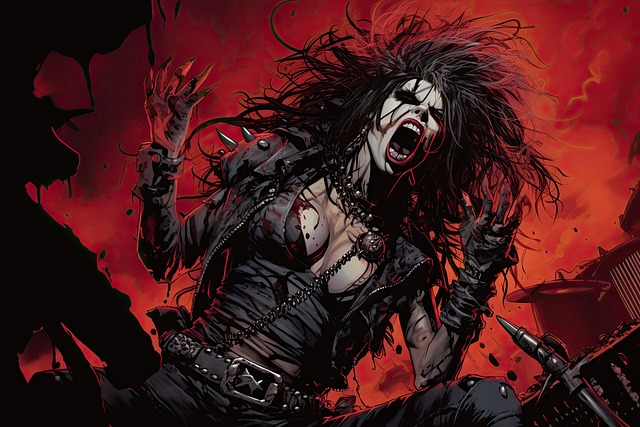# The Art of Algorithms: How AI is Redefining Visual Expression and Artistic Practices
The intersection of technology and art has always been a fertile ground for innovation. In recent years, the emergence of artificial intelligence (AI) has catalyzed a profound transformation in how visual expression is conceived, created, and consumed. This article delves into the multifaceted ways AI is redefining artistic practices, examining the implications for artists, audiences, and the very nature of creativity itself.
## The Rise of Generative Art
Generative art represents one of the most exciting developments in the realm of AI and visual expression. Artists are increasingly utilizing algorithms to create works that are not merely static pieces but dynamic and evolving forms of art. By leveraging machine learning techniques, these creators can generate visual content that is often unexpected and beyond traditional artistic boundaries.
In this context, artists like Refik Anadol and Mario Klingemann are pioneering new frontiers. Their works utilize neural networks and data-driven processes to produce stunning visual experiences that challenge conventional notions of authorship and originality. By programming algorithms to analyze vast datasets, these artists allow machines to contribute to the creative process, leading to unique outcomes that reflect both human and machine intelligence. The result is a collaborative interplay where the artist becomes a curator of the algorithm’s output, guiding the aesthetic direction while relinquishing some control over the final product.
Moreover, the use of AI in generative art raises philosophical questions about creativity itself. What does it mean to be an artist in a world where machines can create? This dialogue invites a re-examination of the role of the artist, shifting from the sole creator to a facilitator of a complex interaction between human intent and machine learning. By embracing AI as a tool, artists are redefining their practices and expanding the possibilities of visual expression.
## AI as a Collaborative Partner
Collaboration has always been a cornerstone of artistic practice, but AI introduces a new dimension to this concept. Rather than merely serving as a tool, AI can act as a co-creator, providing artists with novel insights and inspiration. This partnership allows for the exploration of ideas that may not have been conceivable through traditional methods alone.
Consider the case of artist and researcher Sougwen Chung, who has developed a unique approach to integrating AI into her artistic process. By using AI systems that learn from her drawing style, Chung creates performances where human and machine collaborate in real-time. This synergy not only enhances the creative experience but also prompts audiences to reconsider the boundaries between human and machine-generated art. The dialogue between the artist and the AI becomes a performance in itself, challenging viewers to engage with the artwork on multiple levels.
In addition to enhancing creativity, AI can also provide artists with practical advantages. Tools like Adobe’s Sensei and Runway ML offer features that streamline the creative process, allowing artists to focus on their vision rather than technical execution. These platforms enable rapid prototyping and experimentation, empowering artists to iterate on their ideas more efficiently than ever before. The democratization of these tools means that a broader range of creators can experiment with AI, fostering a diverse artistic landscape where innovation thrives.
## The Impact on Art Consumption and Distribution
The transformation brought about by AI extends beyond the studio; it permeates the way art is consumed and distributed. With platforms like Artbreeder and DeepArt, audiences can engage with AI-generated content in ways that were previously unimaginable. These platforms not only allow users to create their own artworks by blending existing pieces but also facilitate a participatory culture where art becomes a shared experience rather than a solitary one.
Furthermore, the rise of NFTs (non-fungible tokens) has revolutionized the art market, enabling digital artworks to be bought, sold, and owned in a way that validates their uniqueness. Many AI-generated artworks are now being sold as NFTs, challenging traditional notions of ownership and value in the art world. This shift has led to a surge in interest from collectors and investors, further blurring the lines between art, technology, and commerce.
The implications of AI on art consumption are profound. Digital platforms are reshaping how audiences discover and interact with art, fostering a global community that transcends geographical barriers. The accessibility of AI-generated art democratizes the art world, allowing individuals from diverse backgrounds to engage with and contribute to the artistic dialogue. As a result, the art ecosystem is becoming increasingly inclusive, with a wider array of voices and perspectives represented.
## Conclusion: Embracing the Future of Art
The integration of AI into artistic practices is not without its challenges and controversies. Questions surrounding authorship, authenticity, and the potential for machines to overshadow human creativity continue to spark debate within the art community. However, rather than viewing AI as a threat, many artists are embracing it as an opportunity for exploration and growth.
By leveraging AI, artists are not only expanding their creative toolkit but also redefining the very essence of what it means to create. As the boundaries between human and machine blur, new forms of expression emerge, inviting us to reconsider our relationship with art itself. The future of art lies in this collaborative spirit, where algorithms and artists work hand in hand to push the limits of visual expression.
In conclusion, the art of algorithms is reshaping the landscape of artistic practices, offering new possibilities for creation, collaboration, and consumption. As we navigate this uncharted territory, it is essential to engage in ongoing conversations about the implications of AI in art, ensuring that the dialogue remains as dynamic and evolving as the art itself. Embracing this fusion of technology and creativity will pave the way for a vibrant future where art continues to inspire, challenge, and transform society.

